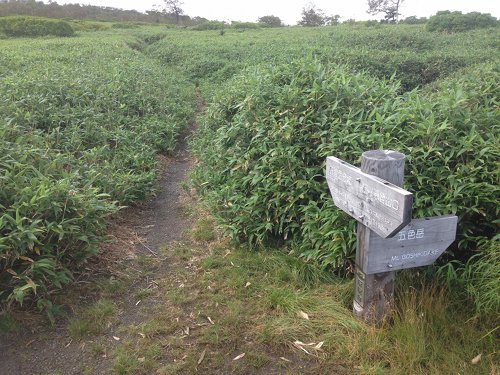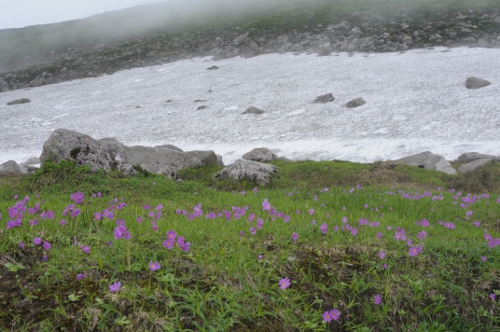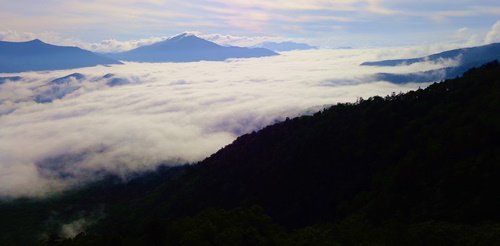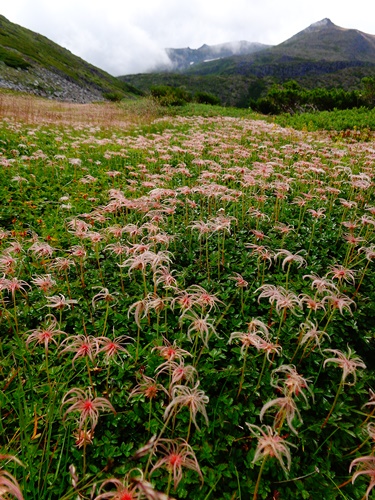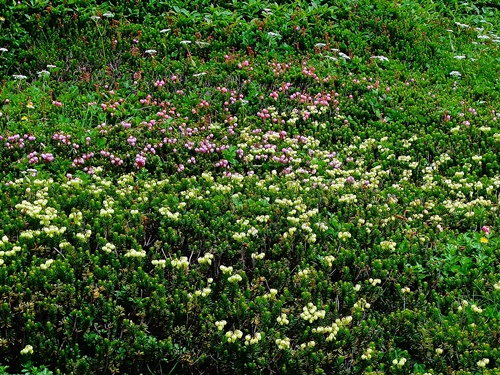Even though I’m an experienced climber, I had heretofore given up on taking the trail from the Numanohara junction to Mt. Ishikari via the Sasa kurilensis corridor because the corridor had grown into a jungle. However, the plants have been cut back nicely and the “jungle” is now gone.
Photo: The Numanohara junction Aug. 14
Photo: The Numanohara junction Aug. 14
